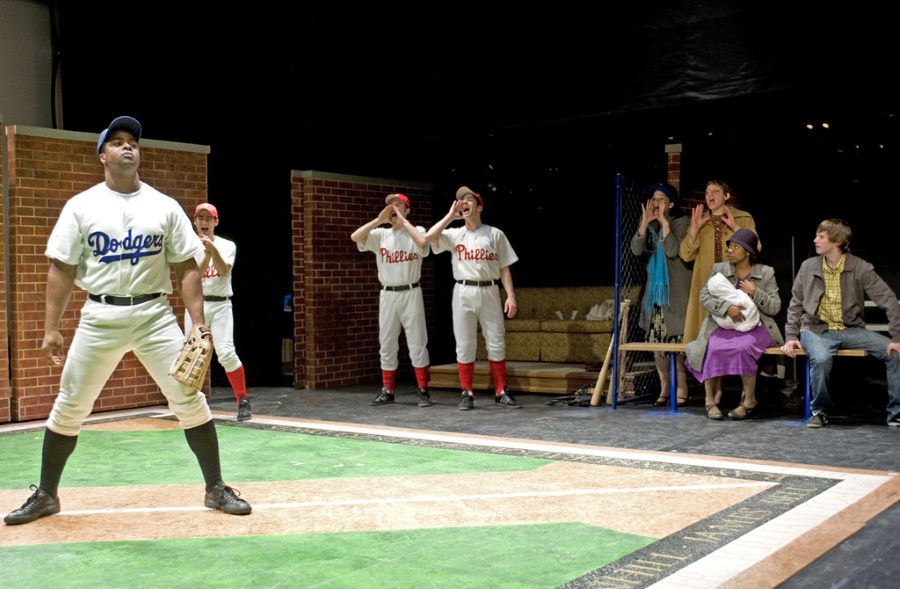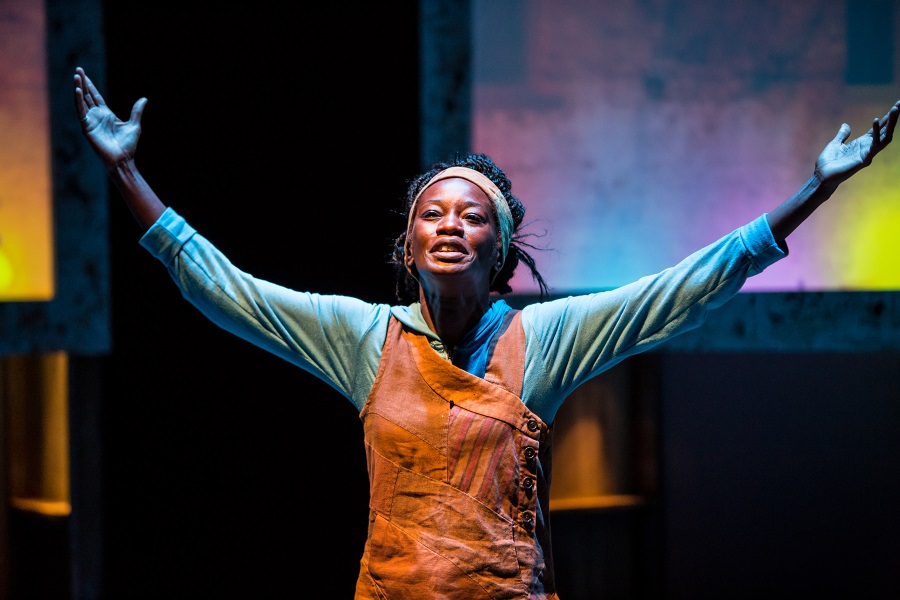“It’s really interesting whether that’s a real dichotomy, or one that’s past its prime,” says Elissa Adams, director of new-play development at Children’s Theatre Company in Minneapolis. She’s speaking of the barriers, real or imagined, that separate “adult” playwrights from “TYA” playwrights—playwrights who mostly or exclusively make theatre for young audiences (or TYA, as it’s known in the industry).
As a field, TYA is much younger than what you might call “adult” theatre, and even in its short history, myriad changes have and continue to take place. One of the more noticeable shifts in the landscape is an increase in playwrights known mostly for their “adult” work writing for TYA. The institutions taking these initiatives may also work with plenty of self-identified “TYA playwrights,” but by commissioning and producing writers like Quiara Alegría Hudes, Marsha Norman, and Jordan Harrison, they’re helping to advance the field’s slow-but-steady integration into the larger theatre community, while creating new-play development models that differ from the norm in small but important ways.
Most companies that commission or produce writers new to the TYA world aren’t looking to make a statement; they just want to produce the best work possible. “Our impulse is always to invite artists to the table whose work excites us,” Adams says. Since its founding in 1965, CTC has produced more than 200 new plays, and is currently developing work with composer Michael Friedman and performance artist Taylor Mac, among many others. Says Adams, “Most of the time those people have not written theatre for young audiences before, but that may be because most playwrights at this point in time haven’t found their way to TYA.”
Kim Peter Kovac, director of programming for young audiences at the Kennedy Center, shares a similarly pragmatic view: “It’s important to support some of the people who write mostly or exclusively for TYA, and at the same time it’s important to find the best possible people for a given project,” he says. “Sometimes those are TYA lifers and sometimes they’re not.”

Jacqueline Russell, artistic director of Chicago Children’s Theater, says that it’s her commitment to enriching the TYA repertoire that motivates her choices of artistic collaborators.
“When we launched the company about 10 years ago, we really wanted to contribute to the canon,” she says, “It’s pretty small, and it’s not always easy to find work that’s really relevant.” For Russell, who has produced work by the likes of playwright Steven Dietz and Motown legend Lamont Dozier, the process of adding to the TYA canon usually begins when an artist approaches her with a concept. One piece that began this way was Jackie and Me, Dietz’s adaptation of Dan Gutman’s book about Jackie Robinson. It was Gutman who suggested an adaptation, Russell recalls, “and I was already admiring Steven’s work.” Dietz wasn’t entirely a TYA newbie, but, as she notes, “that’s not really what he does primarily. Taking a writer of Steven’s caliber and applying his craftsmanship to exciting subject matter is one of the highlights of my career—seeing how he works and supporting that.”
At CTC, Adams explains that the process of commissioning and producing a new play is largely the same as any theatre that develops new work for adult audiences, though she concedes that the artistic staff may have more involvement at the conceptual level than other theatres do.
“There are certainly theatres that want to support an artist and say, ‘Here’s a commission fee, write your next play, and if it’s something we feel excited about then we will look at developing it and producing it.’ We tend to be not quite that open in our commissioning,” she says. “We spend a lot of time talking about and articulating, What is the story, what is the topic, what is the form?”
Adams and CTC artistic director Peter C. Brosius also spend a lot of time in conversation with the playwright about what will resonate with young audiences. “We’re asking playwrights to be more aware of who their audience is than is often the case with other commissions,” she explains. Russell agrees that the increased importance of the audience can be a new consideration for a playwright. “When you produce for adults, you don’t talk about them as being ‘one,’” she observes. “You don’t say ‘adults really like x’ or ‘adults will find this funny.’ Here you’re really talking about creating for a group of people.”
While every development process is different, writers new to TYA can fall into a couple of common traps. “I think sometimes they can underestimate their audience,” admits Kovac, “or think they have to write from a place other than their own particular passion or experience. Quiara Hudes did a piece for us called Barrio Grrrl! with Bill Sherman, and she found that sweet spot really well because she was remembering her own experience.”
Russell has a more concrete note: “I’m a strong believer that children are not so interested in adult-focused material. I think that the longer an adult is onstage speaking, the greater the chances are that we’ll lose our audience. I will look at a script and see a lot of what I call ‘adult talking time’ on the page, and I really challenge writers to think about how interesting that would be to a 7-year-old.”
These and other pitfalls can come into stark relief during previews, where the responsiveness and honesty of young audiences can often be more useful than adult politeness when trying to get a show ready for opening. “At the first preview night, you can literally track beat by beat, line by line, scene by scene, whether or not your story is coming across to the audience in the way that you want it to as an artist,” Adams says. “The relief that most playwrights feel of, ‘Now I know what I need to do, this is working the way a preview is supposed to work’—multiple playwrights have commented on how different that feels than in other theatres.” Adds Kovac, “I think what surprises them the most, those who have not experienced it before, is how immediate the audience reaction is. And how you can’t get away with anything.”

Does the increase in TYA plays by playwrights better known for their other work signal a change in how the playwriting community views TYA? Adams is cautiously optimistic, saying, “I think there’s now a realization that there are children’s theatres that can produce work at the same level of artistic quality and support that non-TYA theatres can.” She’s not sure artists’ thinking has changed all that much, though: “I don’t know that there are more playwrights who are saying, ‘One of the audiences that I want to address as an artist is young people.’ I think that’s still a conversation that needs to be had.”
On the other hand, says Russell, “I rarely find an artist that doesn’t feel like they want to say something to the next generation.” Kovac, who over the years has seen many writers new to TYA participate in the Kennedy Center’s biannual new-play workshop New Visions New Voices, says the reasons for writing for young people may be even more personal. “Years ago, Robert Schenkkan did a play for us,” Kovac recalls, “and I remember him saying to me, ‘I wanted to write a play that my children could see before they were adults,’ and there was that sentiment with a number of writers.”
Whether it’s to reach their own kids or other people’s, as long as playwrights keep an open mind about writing for this audience, it’s a safe bet that institutions will keep an open door for them.
Emma Halpern is the co-artistic director of New York City Children’s Theater.


